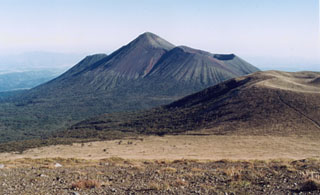Report on Kirishimayama (Japan) — 1 January-7 January 2020
Smithsonian Institution / US Geological Survey
Weekly Volcanic Activity Report, 1 January-7 January 2020
Managing Editor: Sally Sennert.
Please cite this report as:
Global Volcanism Program, 2020. Report on Kirishimayama (Japan) (Sennert, S, ed.). Weekly Volcanic Activity Report, 1 January-7 January 2020. Smithsonian Institution and US Geological Survey.
Kirishimayama
Japan
31.934°N, 130.862°E; summit elev. 1700 m
All times are local (unless otherwise noted)
The number of volcanic earthquakes with hypocenters just below Shinmoedake (Shinmoe peak, a stratovolcano of the Kirishimayama volcano group), increased around 1600 on 2 January prompting JMA to raise the Alert Level to 2 (on a scale of 1-5). There were a high number (22) of earthquakes recorded during 2200-2400.
Geological Summary. Kirishimayama is a large group of more than 20 Quaternary volcanoes located north of Kagoshima Bay. The late-Pleistocene to Holocene dominantly andesitic group consists of stratovolcanoes, pyroclastic cones, maars, and underlying shield volcanoes located over an area of 20 x 30 km. The larger stratovolcanoes are scattered throughout the field, with the centrally located Karakunidake being the highest. Onamiike and Miike, the two largest maars, are located SW of Karakunidake and at its far eastern end, respectively. Holocene eruptions have been concentrated along an E-W line of vents from Miike to Ohachi, and at Shinmoedake to the NE. Frequent small-to-moderate explosive eruptions have been recorded since the 8th century.

